 W
WAdvance Wars is a turn-based strategy video game developed for the Game Boy Advance by Intelligent Systems and published by Nintendo. It was released in North America on September 10, 2001. The game's release in Japan and Europe was delayed, supposedly due to the September 11 attacks in the United States. Although the game was released in Europe in January 2002, neither GBA title was released in Japan until the Game Boy Wars Advance 1+2 compilation in 2004. Advance Wars has been released for the Wii U Virtual Console simultaneously in Europe and North America on April 3, 2014.
 W
WAdvance Wars 2: Black Hole Rising is a turn-based strategy video game for the Game Boy Advance. It was developed by Intelligent Systems and published by Nintendo in 2003. It is the second game in the Advance Wars sub-series of Nintendo Wars. It is preceded by Advance Wars and followed by Advance Wars: Dual Strike. Despite being developed in the region, the original Japanese release was canceled, and the game was later released in the region as part of a compilation cartridge called Game Boy Wars Advance 1+2 in 2004. At E3 2021, Nintendo announced that Black Hole Rising, alongside the original Advance Wars, will be remade and released together for the Nintendo Switch in another compilation titled Advance Wars 1+2: Re-Boot Camp.
 W
WAdvance Wars: Days of Ruin, released as Advance Wars: Dark Conflict in Europe and Australia, is a turn-based strategy video game for the Nintendo DS handheld game console. It is the fourth installment in the Advance Wars series after Advance Wars: Dual Strike and was released in 2008 for North America on January 21; in Europe on January 25; and in Australia on February 21. A Japanese release was planned under the title of Famicom Wars DS: Lost Light, but it was canceled after a series of delays. However, on October 30, 2013, it finally became available in Japan through Club Nintendo as a downloadable platinum status reward for the Nintendo 3DS family of systems.
 W
WAdvance Wars: Dual Strike, known as Famicom Wars DS in Japan, is a turn-based strategy video game developed by Intelligent Systems and published by Nintendo for the Nintendo DS handheld game console. It is the third installment in the Advance Wars series and was released in 2005 for Japan on June 23, in North America on August 22, in Europe on September 30 and in Australia on March 22, 2006. The game is preceded by Advance Wars 2: Black Hole Rising and Advance Wars and succeeded by Advance Wars: Days of Ruin. Advance Wars is the international title of the Wars video game series, which dates back to the Family Computer game Famicom Wars in 1988.
 W
WAlleyway is a 1989 video game developed by Nintendo and Intelligent Systems and published by Nintendo as a global launch title for the Game Boy. It is a Breakout clone and one of the first four games developed and released for the system. The game was released first in Japan in 1989, in North America later that year, and in Europe in 1990. It was later re-released via online distribution for the Nintendo 3DS Virtual Console in June 2011.
 W
WBattle Clash is a mecha-themed light gun shooting game produced by Nintendo and Intelligent Systems and released for the Super Nintendo Entertainment System in 1992. The game supports the Super Nintendo's light gun, the Super Scope. It was followed by Metal Combat: Falcon's Revenge during the following year.
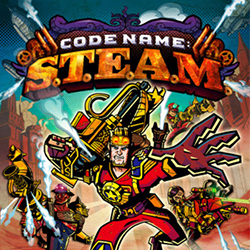 W
WCode Name: S.T.E.A.M., known in Japan with the subtitle Lincoln vs. Aliens, is a turn-based strategy video game developed by Intelligent Systems and published by Nintendo for the Nintendo 3DS handheld game console. The story is set in an alternate steampunk-based history and features a Silver Age comic book art style and a cast of characters from across American literature and folklore. The gameplay blends turn-based strategy with third-person shooter elements in a similar vein to the Valkyria Chronicles series.
 W
WCrashmo, known as Fallblox in Europe and Australia and as Hiku Otsu in Japan, is a puzzle video game developed by Intelligent Systems and published by Nintendo for the Nintendo 3DS via the Nintendo eShop. The game is a sequel to Pushmo and was released in Japan on October 31, 2012, in Europe and Australia on November 15, 2012, and in North America on November 22, 2012.
 W
WDragon Hopper is an unreleased action-adventure video game that was in development by Intelligent Systems and planned to be published by Nintendo on a scheduled 1996 release date exclusively for the Virtual Boy. Along with Japan System Supply's Bound High!, it would have been one of the first second-generation titles for the system if not for the poor critical and commercial reception it garnered that led to its planned relaunch being discontinued, which also led to the game's cancellation in the process.
 W
WDragon Quest Wars is a turn-based strategy video game developed by Intelligent Systems and published by Square Enix for the Nintendo DSi via the systems's DSiWare download service. It is part of the Dragon Quest series and features monsters from the series. It supports up to four player multiplayer, both local and online. Dragon Quest Wars was announced on May 18, 2009, and was released in Japan on June 24, 2009, in North America on September 28, 2009, and in the PAL regions on October 9, 2009.
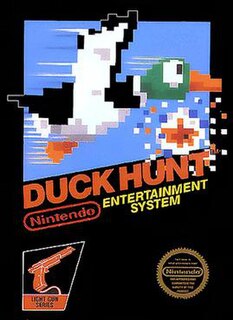 W
WDuck Hunt is a 1984 light gun shooter video game developed and published by Nintendo for the Nintendo Entertainment System (NES) video game console and the Nintendo Vs. System arcade hardware. The game was first released in April 1984, in Japan for the Family Computer (Famicom) console and in North America as an arcade game. It was then released as a launch game for the NES in North America in October 1985, with it also releasing in Europe two years later.
 W
WFire Emblem Heroes is a free-to-play tactical role-playing game developed by Intelligent Systems and published by Nintendo for Android and iOS. The game is a mobile spin-off of the Fire Emblem series featuring its characters, and was released on February 2, 2017. Fire Emblem Heroes received a number of awards and nominations in "Best Mobile Game" categories. As of 2020 the game had grossed over $656 million worldwide, making it Nintendo's highest-grossing mobile game.
 W
WGalactic Pinball is a pinball video game for Nintendo's Virtual Boy game console. The game was released on July 21, 1995 in Japan and on August 14, 1995 in the United States. It is set in the Milky Way galaxy, and has players maneuvering a puck around one of four pinball tables available in the game. The Virtual Boy's standard red-and-black color scheme resulted in criticism of this and other games on the platform for causing nausea, headaches, and eye strain. It also uses parallax, which allows the game to display three-dimensional effects. It has received a mixed reception; it was praised for its authenticity, while reception to its physics and controls were mixed. It has also received criticism for its lack of ambition and originality.
 W
WGame & Wario is a party video game in the WarioWare series developed by Nintendo for the Wii U, named after the series of electronic games known as Game & Watch. The eighth game in the WarioWare series, it revolves around 16 minigames played using the Wii U GamePad. The game was released in Japan on March 28, 2013, North America on June 23, 2013, Europe on June 28, 2013, and Australia on June 29, 2013.
 W
WGame Boy Wars is a turn-based war simulator produced by Nintendo and Intelligent Systems that was released for the Game Boy in Japan only in 1991. It is a portable follow-up to the 1988 Family Computer war simulator Famicom Wars, making it the second game in Nintendo's Wars series. A series of sequels to the original Game Boy Wars were produced by Hudson Soft.
 W
WHogan's Alley is a light gun shooter video game by Nintendo, released for the Nintendo Entertainment System in 1984 and then the arcade Nintendo VS. System in 1985. It was one of the first hit video games to use a light gun as an input device, along with Nintendo's Duck Hunt (1984). The game presents players with "cardboard cut-outs" of gangsters and innocent civilians. The player must shoot the gangs and spare the innocent people. It was a major arcade hit in the United States, where it was the highest-grossing arcade system game of 1985, as well as Europe.
 W
WKaeru no Tame ni Kane wa Naru , also referred to as The Frog for Whom the Bell Tolls, is an action role-playing video game developed by "Team Shikamaru" of Nintendo's Research and Development 1 division, in cooperation with the external company Intelligent Systems. It was published by Nintendo for the Game Boy and released in Japan on September 14, 1992.
 W
WKousoku Card Battle: Card Hero is a card battle RPG developed by Nintendo SPD and Intelligent Systems and published by Nintendo, and was released only in Japan on December 20, 2007 for the Nintendo DS. It is the successor of the Japan-only Nintendo Game Boy Color title, Trade & Battle: Card Hero. An updated version was released as a DSiWare title in Japan on July 29, 2009. No official announcement has been made about localizing the game outside Japan; however, Nintendo of America registered the Card Hero series trademark on May 8, 2009.
 W
WMario Kart: Super Circuit is a 2001 kart racing video game developed by Intelligent Systems and published by Nintendo for the Game Boy Advance. The game is the third installment in the Mario Kart series and the first for handhelds, following Super Mario Kart (1992) and Mario Kart 64 (1996). It was followed by the console game Mario Kart: Double Dash, which was released for the GameCube in 2003. The game retains traditional game elements of Mario Kart set by its predecessors, and received critical acclaim upon release.
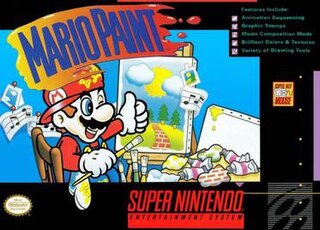 W
WMario Paint is a video game released in 1992 by Nintendo for use with the Super Nintendo Entertainment System. It is packaged with the Super NES Mouse peripheral. The game was developed by Nintendo Research & Development 1 and Intelligent Systems.
 W
WMetal Combat: Falcon's Revenge is a mecha-themed light gun shooting game released for the Super Nintendo Entertainment System in 1994 produced by Nintendo and Intelligent Systems. It is the sequel to Battle Clash and like its predecessor, it requires the use of the Super Scope peripheral in order to be played.
 W
WNintendo Puzzle Collection is a 2003 video game compilation published for the GameCube in Japan by Nintendo. It includes updated versions of three Nintendo-published puzzle video games released for older systems — Yoshi's Cookie (1992), Panel de Pon (1995), and Dr. Mario 64 (2001) — featuring updated graphics and music, alongside four-person multiplayer. The player can download one of the games to their Game Boy Advance via the GameCube - Game Boy Advance link cable.
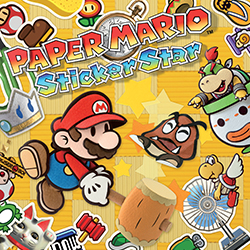 W
WPaper Mario: Sticker Star is a 2012 cross-genre video game developed by Intelligent Systems and published by Nintendo for the Nintendo 3DS console. It is the fourth installment in the Paper Mario series and part of the larger Mario franchise; it is the first game in the series playable on a handheld console. In the game, Mario, with the help of a new ally named Kersti, travel across the Mushroom Kingdom to retrieve the six Royal Stickers scattered by Bowser.
 W
WPaper Mario is a role-playing video game developed by Intelligent Systems and published by Nintendo for the Nintendo 64 home video game console. Paper Mario is the first game in the Paper Mario series. First released in Japan in 2000 and then internationally in 2001, Paper Mario was later re-released for Nintendo's Wii Virtual Console in July 2007, the Wii U Virtual Console in April 2015, and via Nintendo Switch Online in December 2021.
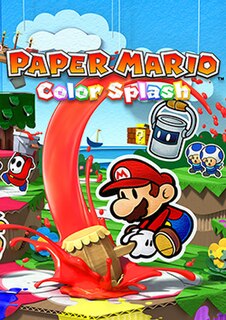 W
WPaper Mario: Color Splash is a 2016 cross-genre video game developed by Intelligent Systems and published by Nintendo for the Wii U console. It is the fifth installment in the Paper Mario series, and is part of the larger Mario franchise. The story follows the protagonist Mario and Huey, on a quest to retrieve the six Big Paint Stars to save Prisma Island and rescue Princess Peach from Bowser.
 W
WPaper Mario: The Origami King is a 2020 cross-genre video game released exclusively for the Nintendo Switch console. Developed by Intelligent Systems and published by Nintendo, it is the sixth game in the Paper Mario series, part of the larger Mario franchise. The story follows Mario and his friends as he sets out on a journey to prevent the Mushroom Kingdom from being transformed into origami. To do so, Mario must free Princess Peach's castle from five decorative streamers that extend across the kingdom.
 W
WPaper Mario: The Thousand-Year Door is a 2004 role-playing video game developed by Intelligent Systems and published by Nintendo for the GameCube. The Thousand-Year Door is the second game in the Paper Mario series following Paper Mario, and is part of the larger Mario franchise. In the game, when Mario and Princess Peach get involved in the search for a mystic portal that holds great fortune, Peach is kidnapped by an alien group called the X-Nauts; Mario sets out to find the treasure and save the princess.
 W
WPlanet Puzzle League, known as Puzzle League DS in Europe, and as Panel de Pon DS in Japan, is a video game for the Nintendo DS handheld video game console in the Puzzle League/Panel de Pon visual matching puzzle game series. In North America, Planet Puzzle League is part of the Touch! Generations brand; in Japan, Panel de Pon DS is marketed in the general Touch! brand. The publisher for the game is Nintendo, and the developer is Nintendo second-party developer Intelligent Systems, creator of the original Panel de Pon and its cult classic English-language adaptation Tetris Attack. The game was released in Japan on April 26, 2007 in North America on June 4, 2007, and in Europe on June 29, 2007.
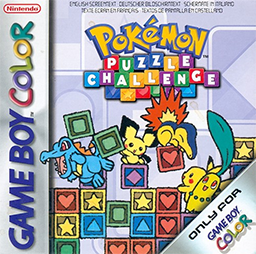 W
WPokémon Puzzle Challenge is a video game for the Game Boy Color. It is based on Panel de Pon, only with characters from the Pokémon franchise. The characters in Pokémon Puzzle Challenge are based on those in the Gold and Silver games, while those in Pokémon Puzzle League—its Nintendo 64 equivalent—were based more on the anime characters. However, the game is also focused around beating the Johto leaders in a puzzle challenge in Johto region. The game play mode is divided into 1 Player, 2 Player, and Training. The game was later released on the 3DS eShop on November 6, 2014.
 W
WPushmo, known as Pullblox in Europe and Australia and Hikuosu in Japan, is a downloadable puzzle game developed by Intelligent Systems and published by Nintendo for its Nintendo 3DS handheld system, available on the Nintendo eShop. In the game, players must shift around puzzle blocks in order to create steps and platforms, ultimately to reach children who have been trapped within the giant structures. A sequel, Crashmo, was released for the Nintendo 3DS in 2012. A third game, Pushmo World, was released for Wii U on June 19, 2014. A fourth game, Stretchmo, was released for Nintendo 3DS in May 2015.
 W
WPushmo World, known as Pullblox World in Europe and as Hikuosu World in Japan, is a puzzle game developed by Intelligent Systems and published by Nintendo for the Wii U video game console. The game is a sequel to Pushmo and Crashmo, and was released worldwide on June 19, 2014. A sequel, Stretchmo for the Nintendo 3DS, was released in 2015.
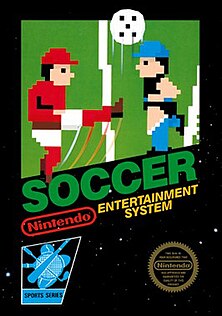 W
WSoccer is a video game produced by Intelligent Systems and Nintendo as part of its Sports Series for the Nintendo Entertainment System. It was released in Japan and the United States in 1985, and in Europe in 1987. It was also released for the Family Computer Disk System in 1986. It is also available on the Virtual Console since June 12, 2014, to be bought from the Wii Shop Channel and the Wii U Nintendo eShop.
 W
WStretchmo, known as Fullblox in Europe and as Hikudasu Hippaland in Japan, is a downloadable puzzle game developed by Intelligent Systems and published by Nintendo for its Nintendo 3DS handheld system. The game is a sequel to Pushmo, Crashmo, and Pushmo World and was released on the Nintendo eShop.
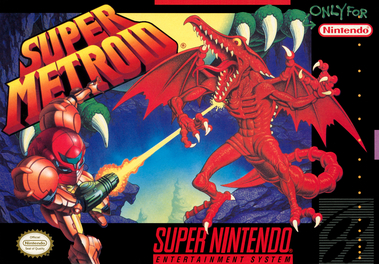 W
WSuper Metroid is an action-adventure game developed and published by Nintendo for the Super Nintendo Entertainment System in 1994. It is the third installment in the Metroid series, following the events of the Game Boy game Metroid II: Return of Samus (1991). Players control bounty hunter Samus Aran, who travels to planet Zebes to retrieve an infant Metroid creature stolen by the Space Pirate leader Ridley.
 W
WSuper Paper Mario is a 2007 action role-playing game (RPG) developed by Intelligent Systems and published by Nintendo for the Wii. It is the third installment in the Paper Mario series. The game follows Mario, Peach, Bowser, and Luigi as they attempt to collect Pure Hearts and stop Count Bleck and his minions from destroying the universe.
 W
WTennis is a sports video game developed by Nintendo in 1983, and released for the Family Computer (Famicom) in 1984. The arcade game version Vs. Tennis was also released for the Nintendo VS. System in 1984, becoming a hit at Japanese and American arcades that year; it was the sixth top-performing arcade game of 1984 in the United States. Tennis is one of 17 launch games for the Nintendo Entertainment System (NES) in North America and Europe. The game was re-released for the Game Boy as a launch game in North America.
 W
WTetris Attack, also known as Panel de Pon, is a 1995 puzzle video game developed by Intelligent Systems and published by Nintendo for the Super Nintendo Entertainment System. A Game Boy version was released a year later. In the game, the player must arrange matching colored blocks in vertical or horizontal rows to clear them. The blocks steadily rise towards the top of the playfield, with new blocks being added at the bottom. Several gameplay modes are present, including a time attack and multiplayer mode.
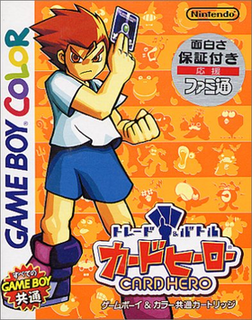 W
WTrade & Battle: Card Hero is a card battle role-playing game developed by Nintendo R&D1 and Intelligent Systems and published by Nintendo for the Game Boy Color. It was released in Japan on February 21, 2000.
 W
WWarioWare D.I.Y., known as WarioWare: Do It Yourself in the PAL regions, is a minigame compilation and game creation system by Nintendo SPD and Intelligent Systems and published by Nintendo for the Nintendo DS. It is the seventh title in the WarioWare series and the last to be developed for the Nintendo DS family of systems. It was revealed at Nintendo's conference on October 2, 2008 and it was released in Japan on April 29, 2009. It was released in 2010 in North America, Europe, and Australia respectively and was accompanied by a separate WiiWare title, WarioWare: D.I.Y. Showcase.
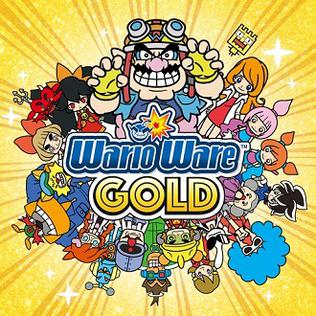 W
WWarioWare Gold is a minigame compilation co-developed by Nintendo EPD and Intelligent Systems and published by Nintendo for the Nintendo 3DS family of video game consoles. The ninth installment in the WarioWare series, it was released in PAL regions in July 2018, and in North America and Japan the following month. The game's plot follows the greedy Wario who has organized a gaming tournament for a large cash prize, with the ultimate goal of claiming the money for himself. Meanwhile, various other WarioWare characters deal with other problems which play out in the form of short stories.
 W
WWarioWare, Inc.: Mega Party Games! is a party video game for the GameCube. A remake of WarioWare, Inc.: Mega Microgames!, and the second entry in the WarioWare series, the game translates the "microgame" gameplay of Mega Microgames! to be playable in a multiplayer environment. It comes with eight special multiplayer modes for up to four players that all involve the known microgames in some way.
 W
WWarioWare: Get It Together! is a minigame party video game co-developed by Nintendo EPD and Intelligent Systems for the Nintendo Switch. It is the tenth installment in the WarioWare series, following WarioWare Gold (2018) for the Nintendo 3DS, and was announced at E3 2021 during the Nintendo Direct presentation. A demo of the game released on the Nintendo eShop on August 19, 2021. The game released worldwide on September 10, 2021.
 W
WWarioWare: Smooth Moves is a party video game developed by Nintendo SPD and Intelligent Systems. The game was published by Nintendo for its Wii video game system in Japan in December 2006, and in Europe, North America, and Australia in January 2007. It was re-released on May 20, 2011, in Europe as part of the Nintendo Selects program. It is the fifth game in the WarioWare series of games, and the only game in the series to be released for the Wii. Like its predecessors, WarioWare: Smooth Moves is built around a collection of microgames that last about five seconds each, and which require that the player hold the Wii Remote in specific positions. The game offers the microgames to the player in rapid succession, by first instructing the player to hold the Wii Remote in a specific manner, and then showing them the microgame. The microgames are divided into several stages, each of which loosely connects the microgames with the help of a story. Additionally, this was the first Mario game to be released for the console.
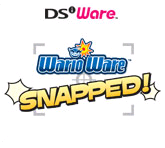 W
WWarioWare: Snapped! is a minigame compilation party video game developed by Nintendo SPD Group No.1 and Intelligent Systems and published by Nintendo for the Nintendo DSi's DSiWare digital distribution service, and is part of the WarioWare series of video games. It is the sixth game in the series. It was released for Nintendo's DSiWare service, which started at the launch of the DSi on April 5, 2009 in North America.
 W
WWarioWare: Touched! is a minigame compilation party video game released by Nintendo for the Nintendo DS. The fourth installment of the WarioWare series, and the first of three on the Nintendo DS, the game involves rapidly completing "microgames" — simple minigames lasting extremely short periods of time — as quickly as possible. The microgames are exclusively controlled with the Nintendo DS's touchscreen and microphone.
 W
WWarioWare: Twisted! is a video game for the Game Boy Advance, developed by Nintendo SPD with Intelligent Systems and published by Nintendo. It was released on October 14, 2004, in Japan; May 19, 2005 in Australia; May 23, 2005 in North America; and June 24, 2005, in Europe. The second game in the WarioWare series and the seventh in the Wario series overall, Twisted! was the last Wario game to be released on a Game Boy family system.
 W
WWild Gunman is a light gun shooter game created by Nintendo. Originally created as an electro-mechanical arcade game in 1974 by Gunpei Yokoi, it was adapted to a video game format for the Famicom console in 1984. It was released in 1985 as a launch game for the Nintendo Entertainment System (NES) with the Zapper light gun.
 W
WWrecking Crew is an action video game developed and published by Nintendo. Designed by Yoshio Sakamoto, it was first released as an arcade game for the Nintendo VS. System in 1984, titled Vs. Wrecking Crew and featuring a simultaneous two-player mode. It was released as a single-player game for the Family Computer (Famicom) console in 1985, and as a launch game for the Nintendo Entertainment System (NES) later that year.
 W
WYakuman (役満) is a 1989 mahjong video game developed by Intelligent Systems and published by Nintendo for its handheld Game Boy as one of the Japanese launch titles. It is the first entry in a series of first-party Japanese mahjong games on Nintendo systems, with sequels on the Famicom, Game Boy Advance, DS, Wii, Wii U, and 3DS.